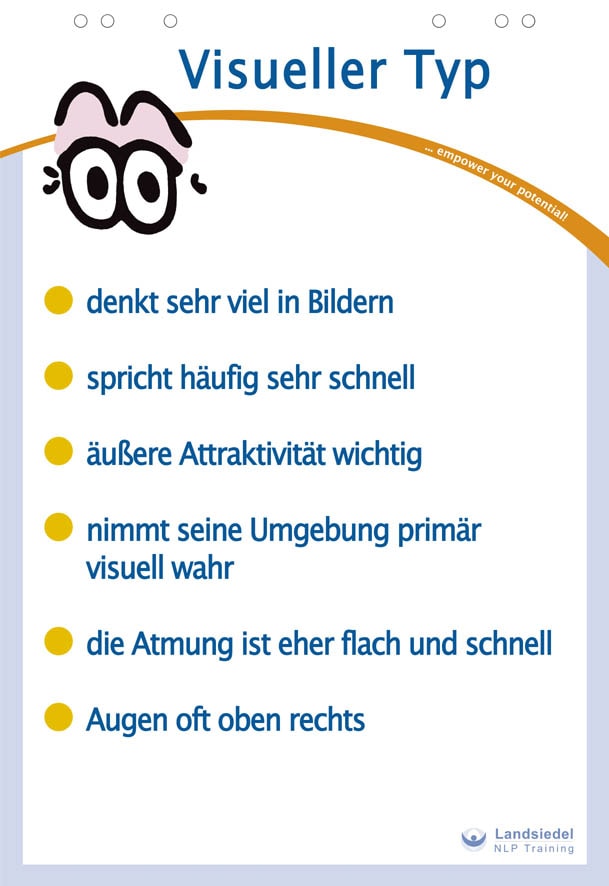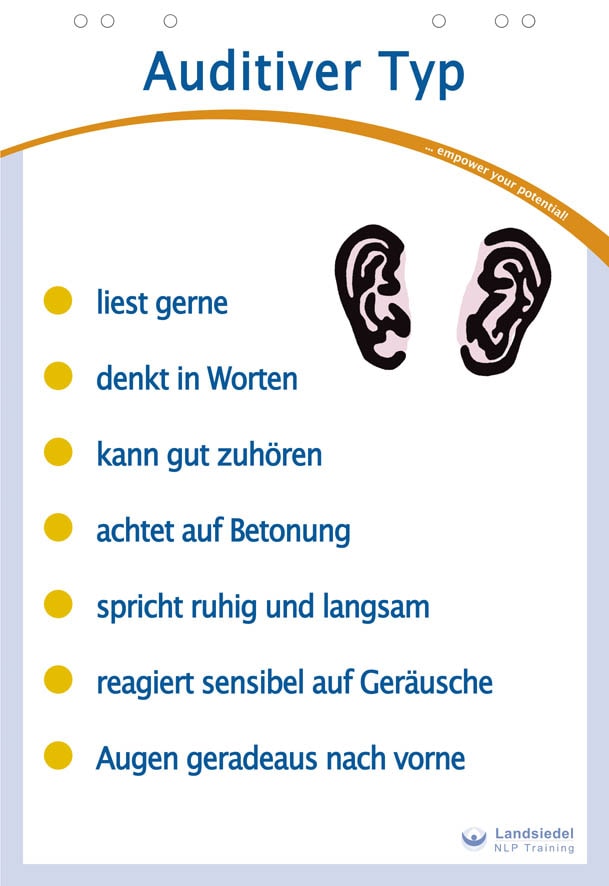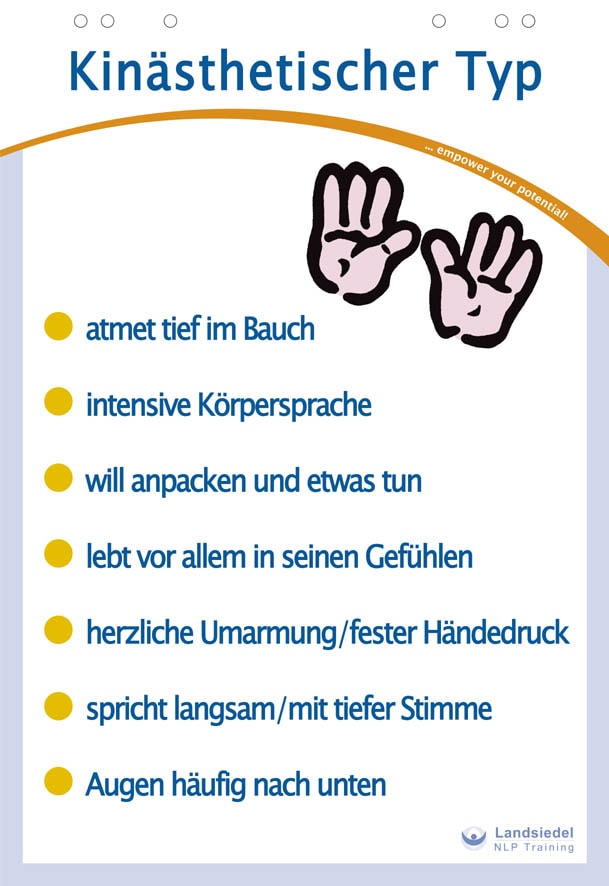Introduction to the Three Types:
Visual, Auditory and Kinesthetic
This section introduces the three main perceptual types: the visual, auditory, and kinesthetic types. Their preferences and particular characteristics are described.
The Visual Type

The visual type primarily perceives their surroundings through sight. They think largely in pictures, which they can recall at lightning speed. Because they use language mainly to describe their inner images, they tend to speak quickly. Their breathing is rather shallow and fast, and their eyes often move upward to the right or left as they visualize. Their shoulder and abdominal muscles are usually tense.
External attractiveness is particularly important for them in choosing a partner. They value a stylish car and pay great attention to color selection in their clothing. They easily get an overview of situations and can recognize small details very quickly. They closely observe body language and facial expressions and consider eye contact very important.
The Auditory Type

The auditory type is good at listening — both to others and to their own inner voices. They often talk to themselves and are sensitive to external sounds and voices. Their breathing is neither particularly shallow nor deep. They look straight ahead, speak calmly and slowly, and pay attention to word choice and sentence structure. When they think, they focus inward and take their time, as they think in words and sentences rather than images. The auditory type is a demanding conversationalist with a vast vocabulary. Brilliant expressions and long discussions on political or philosophical topics bring them great pleasure.
They have difficulty remembering faces but can recall numbers, data, and facts exceptionally well. During a conversation, they may avoid eye contact for long periods, which often irritates visual types, who see it as impolite. Auditory people love to read and often point out distinctions such as “the same” versus “identical.” They also pay close attention to tone of voice and emphasis in speech.
The Kinesthetic Type

The kinesthetic type lives mainly through feelings. They breathe deeply into their abdomen, and their eyes are often directed downward. They speak slowly and in a deep voice. Overall, they appear more passive, as their feelings allow fewer spontaneous reactions. Their muscles are relaxed. When greeting someone, a kinesthetic type may not offer a friendly look or warm words but rather a heartfelt hug or firm handshake. They are attentive to movement and inner sensations. When recalling a memory, they access it through the feelings they experienced at that moment. They tend to be active and do a lot of sports — not to talk or watch, but to engage and take action. They are curious about how things feel, which is why they often touch or try on a product before deciding to buy it.
The kinesthetic type is clearly at a disadvantage in school, where information is usually conveyed through written text or the teacher’s voice. They prefer “learning by doing.” This gives them a strong advantage in dance or surfing lessons. In conversation, they use very expressive body language and often involve their entire body.
It is very important to identify which sensory modality your conversation partner is currently using or prefers most. This way, you can more easily build rapport and avoid common misunderstandings.

 Deutsch
Deutsch English
English Français
Français 中文
中文 Español
Español नहीं
नहीं Русский
Русский